Diana Der Hovanessian: ‘I Write Almost Every Day’
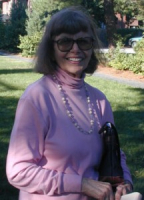 Diana Der-Hovanessian, New England born poet, was twice a Fulbright professor of American Poetry and is the author of more than 25 books of poetry and translations. She has awards from the National Endowment for the Arts, Poetry Society of America, PEN/Columbia Translation Center, National Writers Union, Armenian Writers Union, Paterson Poetry Center, Prairie Schooner, American Scholar, and the Armenian Ministry of Culture.
Diana Der-Hovanessian, New England born poet, was twice a Fulbright professor of American Poetry and is the author of more than 25 books of poetry and translations. She has awards from the National Endowment for the Arts, Poetry Society of America, PEN/Columbia Translation Center, National Writers Union, Armenian Writers Union, Paterson Poetry Center, Prairie Schooner, American Scholar, and the Armenian Ministry of Culture.
Among the several plays written by Der-Hovanessian, two (The Secret of Survival and Growing Up Armenian) were produced and in 1984 and 1985 traveled to many college campuses in the 80s telling the Armenian story with poetry and music. After 1989, The Secret of Survival with Michael Kermoyan and later with Vahan Khanzadian was performed for earthquake relief benefits. She works as a visiting poet and guest lecturer on American poetry, Armenian poetry in translation, and the literature of human rights at various universities in the U.S. and abroad. She serves as president of the New England Poetry Club.

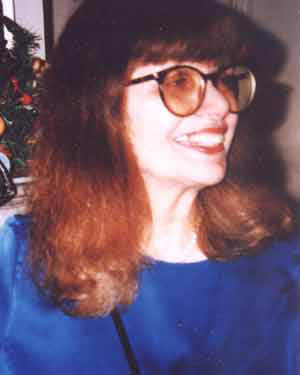
The following interview by Artsvi Bakhchinyan was conducted in the poet’s home in Cambridge.
***
AB: This year, you added three new books to your publications. How many does that make?
DDH: Fifteen of my own books and 10 volumes of translations.
AB: The new translations are compiled in Armenian Poetry of Our Time. And the book starts with 20th-century greats such as Daniel Varoujan, Siamanto, and Tekeyan, and goes on to young contemporary poets such as Vahe Arsen. Do you think of translating as part of your own work? Do you consider it an obligation? Or is it a way of being part of great poetry you admire?
DDH: I’ll answer yes to all those questions. Translating isn’t as much fun as creating something new. And, it has a lot of responsibilities attached. But I started because there was no contemporary anthology of Armenian poetry in English. Some individual poems had been translated by past poets, even Henry Longfellow. But in 1896, working from literal prose translations from Armenian scholars and friends, Alice Stone Blackwell produced the first edition in English of Armenian Poems. Then in 1917 for Near East Relief, and to call attention to the murder of Armenian poets in 1915 and the genocide, she added more poems and published another edition.
AB: Alice Stone Blackwell was a great friend of Armenians and a humanist. But she was not a poet. Do you think her translations hold up?
DDH: Of course, they are dated. She uses 18th- and 19th-century phrases. For instance, she begins Bedros Tourian’s Little Lake: “Why dost thou lie in hushed surprise, Thou little lonely mere?” It’s too bad that Julia Ward Howe, who was also active (she was president of the Friends of Armenia), did not do some of the poems. She was a known poet.
AB: Alice Stone Blackwell’s book has long been out of print, I believe. Was that why you started?
DDH: Before I had any book publications, but was publishing poetry in journals and newspapers, a Bulgarian poet asked me to work with him on an anthology of Bulgarian poetry. And I said, “No, I can’t do that…when there isn’t a modern Armenian anthology.”

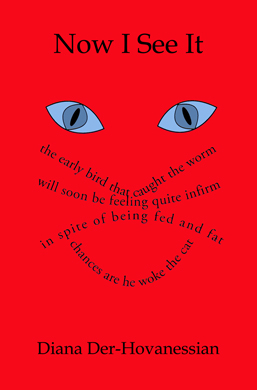
AB: And you began…
DDH: I started it with my father. We had already done a few translations together. The first were for a concert the Boston Pops was doing of Armenian sharagans for his friend, the conductor Rouben Gregorian. And the second, for a lecture on Daniel Varoujan my hayrig [father] was giving and wanted six poems in English for that program. I was publishing poems already in those days…and when I saw how the Varoujan turned out, I sent them to one of my editors who surprised me by taking the whole batch.
AB: And that’s how you started?
DDH: No. Actually another editor of mine invited me to lunch and said she was thinking of starting a page, at the Christian Science Monitor, of international poems and wanted me to do some Armenian, I told her I didn’t know Armenian that well. This was a long time ago. And she looked at me, and said, “Well, you’re young. Learn it!” So I did, I took every course offered at Harvard. And every course at Boston University. But, also, I had lots of help. After my father’s death many friends sent me poems, or read to me. And of course, my students in Armenia would run around gathering books. And poets, of course, would come to read to me. The only book I did all alone was the volume of Derian. I did it with a dictionary and then had it checked. The Koutchag, too. Strangely enough, I didn’t find Koutchag’s dialect difficult. It sounded similar to the dialect my grandmother had spoken to me. But Sayat Nova was hard. And most intimidating was Narek, even though I worked from modern Armenian translations of the old krapar (classical Armenian). For the first anthology, I did the Narek with the help of Hayr Oshagan, a priest at Holy Trinity Church in Cambridge. And for the book of Narek, translations were done with Tom Samuelian… He would send a driver every morning with word-for-word translations done by a priest when I was in Yerevan on a Fulbright. And then when I returned to Boston the rest were sent by e-mail.

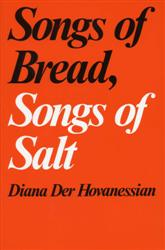
AB: How do you choose which poems to include in an anthology?
DDH: I think a translator often does a poem he wishes he could have written himself. Or else it is a very important poem, pivotal in some historic aspect, and must be done. For instance, I had to translate Bedros Tourian for the first anthology because he was important historically… He was the first to use vernacular Armenian and write about personal themes.
AB: But you didn’t like Tourian?
DDH: No, although he was my mother’s favorite. He did have one great poem, “Drdounch.” My rules for translating include three debts the translator owes: 1) The translator owes the reader the poem the original poet wrote. 2) The translator owes the original poet the best possible version in the second language. The original poet’s reputation is in his hands. 3) The translator owes the poem a vibrant second life in the second language.
AB: You did a large volume of Charents with M. Margossian. And some of those translations were used in a recent film made in Yerevan. Is Charents one of your favorite poets?
DDH: Not when I started. During the five years I was translating Charents, I would dream about him. We would have arguments in these dreams. On my first trip to Armenia I was working on that book…and met his daughters and spent a lot of time with Anahid.
AB: During another trip I took you to meet the late Regina Ghazaryan, a friend of Charents’s who had buried some of his papers.
DDH: Oh yes, yes, yes. That was an unforgettable meeting. It is important to meet people who personally know the authors you translate. I hope they remember Regina in Armenia.

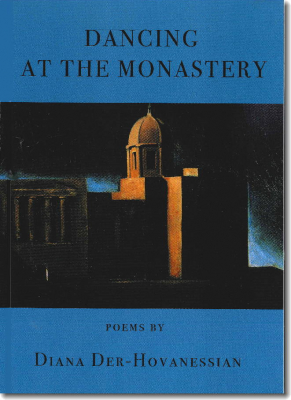
AB: One of your new books is Dancing at the Monastery. It has a lot of prosy poems. Have you abandoned formal verse and rhyme?
DDH: No, my very newest manuscript has a larger share of sonnets and villanelles, etc.
AB: But the brand new book, just out this month, from Cervana Barva Press, NOW I SEE IT, is in shapes.
DDH: Actually those poems are just published, but were written a while ago. My editor at Sheep Meadow Press would also take out any light or humorous verse, any strange shapes. But in the last few books he allowed sections of light verse. By the way, I’m a great admirer of Charents’s light and satiric verses. I enjoyed translating those.
AB: And you didn’t have dreams then about arguing with him about those?
DDH: (Laughs) No! But to get back to the shaped poems, in the 16th century, English poet George Herbert did some religious poems in the shapes of altars and wings, and more recently in the 50s in Brazil and Germany some artists were combining strewn words on posters and art and calling the movement Concrete Poetry.

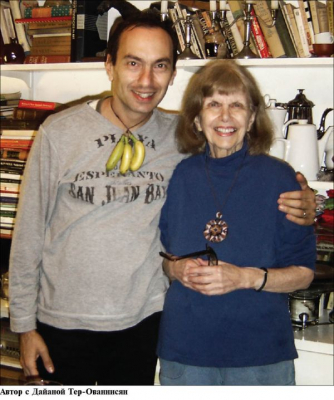
AB: Tell me a little bit about your writing habits. Do you write every day? Do you rewrite? Do you keep old versions? You did a recent program with an American poet, X.J. Kennedy, titled, “Where Does a Poem Come from?” Did you two decide where poems come from?
DDH: We decided, of course, that they come from poets. And they come to poets from the most unexpected places: a news item, a remembered conversation, someone else’s poem you wish to answer, a dream. A lot of poems used to come to me when I was half-asleep and I would get up to write them down. Now…I just ignore them. But I do write almost every day…mostly rewriting. And I throw most of it away or my house would be filled with paper. Even more than now! I do write on paper first. Then type it into the computer and keep changing it. What takes up most of my time is the New England Poetry Club: planning programs, finding judges for contests, introducing speakers, answering mail. I am hoping to retire from it soon. We have a good vice-president.
AB: Well I hope the Varoujan Prize and programs on translations that you started will continue.
DDH: I hope so, too.

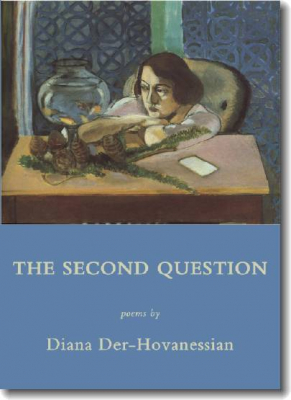
AB: I have one last question. I think you have often been asked, Have you thought of writing a memoir? After all, you have known and worked with some of the biggest names, not only in Armenian poetry but world poetry: Andrey Voznesensky, Bella Akhmadulina, Tomas Tranströmer, Yevgeni Yevtushenko, Czesław Miłosz, Seamus Heaney.
DDH: (Laughs) Mmm.
By Artsvi Bakhchinyan
• ՀՈԴՎԱԾՆԵՐԸ ՄԱՍՆԱԿԻ ԿԱՄ ԱՄԲՈՂՋՈՒԹՅԱՄԲ ԱՐՏԱՏՊԵԼՈՒ ԿԱՄ ՕԳՏԱԳՈՐԾԵԼՈՒ ԴԵՊՔՈՒՄ ՀՂՈՒՄԸ www.anunner.com ԿԱՅՔԻՆ ՊԱՐՏԱԴԻՐ Է :
• ԵԹԵ ԴՈՒՔ ՈՒՆԵՔ ՍՈՒՅՆ ՀՈԴՎԱԾԸ ԼՐԱՑՆՈՂ ՀԱՎԱՍՏԻ ՏԵՂԵԿՈՒԹՅՈՒՆՆԵՐ ԵՎ
ԼՈՒՍԱՆԿԱՐՆԵՐ,ԽՆԴՐՈՒՄ ԵՆՔ ՈՒՂԱՐԿԵԼ ԴՐԱՆՔ info@anunner.com ԷԼ. ՓՈՍՏԻՆ:
• ԵԹԵ ՆԿԱՏԵԼ ԵՔ ՎՐԻՊԱԿ ԿԱՄ ԱՆՀԱՄԱՊԱՏԱՍԽԱՆՈՒԹՅՈՒՆ, ԽՆԴՐՈՒՄ ԵՆՔ ՏԵՂԵԿԱՑՆԵԼ ՄԵԶ` info@anunner.com:
| Կիսվել : |
 18:13
18:13 Սեպտեմբերի 23-ին Երևանի «Գևորգյան» ցուցասրահում տեղի ունեցավ հայազգի նկարիչ Օնիկ Սահակյանի անհատական ցուցահանդեսը: Սա այն դեպքն է, որի մասին անվերապահորեն կարելի է ասել՝ «անցավ աննախադեպ հաջողությամբ»: Ցուցադրությունը տևեց 15 օր, որի ընթացքում օրական 200-ից ավելի այցելու էր գալիս: Բերված 16 աշխատանքից յոթը վաճառվեցին (14-ը հատուկ նկարվել էր Երևան բերելու համար): Այստեղ մեծ դեր ուներ ոչ միայն պրոֆեսիոնալ գովազդը, այլև այն հանգամանքը, որ Սահակյանը եղել է Սալվադոր Դալիի մտերիմ բարեկամը և օգնականը: ...
Սեպտեմբերի 23-ին Երևանի «Գևորգյան» ցուցասրահում տեղի ունեցավ հայազգի նկարիչ Օնիկ Սահակյանի անհատական ցուցահանդեսը: Սա այն դեպքն է, որի մասին անվերապահորեն կարելի է ասել՝ «անցավ աննախադեպ հաջողությամբ»: Ցուցադրությունը տևեց 15 օր, որի ընթացքում օրական 200-ից ավելի այցելու էր գալիս: Բերված 16 աշխատանքից յոթը վաճառվեցին (14-ը հատուկ նկարվել էր Երևան բերելու համար): Այստեղ մեծ դեր ուներ ոչ միայն պրոֆեսիոնալ գովազդը, այլև այն հանգամանքը, որ Սահակյանը եղել է Սալվադոր Դալիի մտերիմ բարեկամը և օգնականը: ...
 18:10
18:10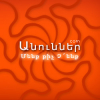 1900 թվականին Ֆլորենցիայի եւ Փարիզի երկու հրատարակչություն լույս են ընծայել ֆրանսերեն մի գիրք՝ «Տեսություն (սոցիալական հետազոտություն)» («Considռrations (Etudes sociales)») վերնագրով, որի հեղինակը հանդես էր եկել Արմենա ծածկանվամբ: Գիրքը, որ վերաբերում էր հայկական հարցին և այդ խնդրի շուրջ եվրոպական դիվանագիտության դիրքորոշմանը, լայն արձագանք է ունեցել եվրոպացի մասնագետների շրջանում: Հեղինակին անվանել են «վեհանձն և բորբոքյալ հոգի», «հանրագիտակ»: Ֆրանսիացի քաղաքական գործիչ Ժան Ժորեսն այդ գիրքը համա...
1900 թվականին Ֆլորենցիայի եւ Փարիզի երկու հրատարակչություն լույս են ընծայել ֆրանսերեն մի գիրք՝ «Տեսություն (սոցիալական հետազոտություն)» («Considռrations (Etudes sociales)») վերնագրով, որի հեղինակը հանդես էր եկել Արմենա ծածկանվամբ: Գիրքը, որ վերաբերում էր հայկական հարցին և այդ խնդրի շուրջ եվրոպական դիվանագիտության դիրքորոշմանը, լայն արձագանք է ունեցել եվրոպացի մասնագետների շրջանում: Հեղինակին անվանել են «վեհանձն և բորբոքյալ հոգի», «հանրագիտակ»: Ֆրանսիացի քաղաքական գործիչ Ժան Ժորեսն այդ գիրքը համա...
 18:07
18:07 Երևանյան դերասանների ընտանիքում Մնջախաղի պետական թատրոնի դերասանուհի Ռուզան Հակոբյանը էականորեն տարբերվում է իր գործընկերուհիներից։ Ոչ միայն իր տարաշխարհիկ, ոչ ստանդարտ արտաքինով։ Թվում է, թե մեր դերասանուհիներից ուրիշ ոչ մեկի խաղն այնքան ենթարկված չէ պլաստիկային, որքան նրանը։ Թվում է, թե իր մարմնի շարժումներով և արտահայտիչ դիմախաղով նա ի զորու է մարմնավորել ամեն մի երևույթ։ Պլաստիկայի լեզվով կերպարի ոչ միայն արտաքինը, այլև ներքինը պատկերելու նրա ձիրքն անուրանալի է։ Երբ որ Ռուզան Հակոբյանը մարմն...
Երևանյան դերասանների ընտանիքում Մնջախաղի պետական թատրոնի դերասանուհի Ռուզան Հակոբյանը էականորեն տարբերվում է իր գործընկերուհիներից։ Ոչ միայն իր տարաշխարհիկ, ոչ ստանդարտ արտաքինով։ Թվում է, թե մեր դերասանուհիներից ուրիշ ոչ մեկի խաղն այնքան ենթարկված չէ պլաստիկային, որքան նրանը։ Թվում է, թե իր մարմնի շարժումներով և արտահայտիչ դիմախաղով նա ի զորու է մարմնավորել ամեն մի երևույթ։ Պլաստիկայի լեզվով կերպարի ոչ միայն արտաքինը, այլև ներքինը պատկերելու նրա ձիրքն անուրանալի է։ Երբ որ Ռուզան Հակոբյանը մարմն...
 17:57
17:57 Համաշխարհային թատրոնի պատմությունն ուսումնասիրելիս նկատելի է մի ուշագրավ իրողություն. 19-րդ դարի վերջին, 20-րդ դարի սկզբին մի շարք հայորդիների վիճակվել է դառնալ այս կամ այն ժողովրդի թատերական գործի ռահվիրա։ Թուրքական պրոֆեսիոնալ թատրոնի հիմնադիրներ դարձան Հակոբ Վարդովյանը և Մարտիրոս Մնակյանը, Իրանում եվրոպական տիպի առաջին ներկայացումը բեմադրեց Արմեն Օհանյանը, վրացական նոր թատրոնի հիմնադիրներից է Միխայիլ Թումանովը, ռուսական էստրադային թատրոնի հիմքը դրեց Նիկիտա Բալիևը, Մոսկվայի հրեական թատրոնինը՝ ...
Համաշխարհային թատրոնի պատմությունն ուսումնասիրելիս նկատելի է մի ուշագրավ իրողություն. 19-րդ դարի վերջին, 20-րդ դարի սկզբին մի շարք հայորդիների վիճակվել է դառնալ այս կամ այն ժողովրդի թատերական գործի ռահվիրա։ Թուրքական պրոֆեսիոնալ թատրոնի հիմնադիրներ դարձան Հակոբ Վարդովյանը և Մարտիրոս Մնակյանը, Իրանում եվրոպական տիպի առաջին ներկայացումը բեմադրեց Արմեն Օհանյանը, վրացական նոր թատրոնի հիմնադիրներից է Միխայիլ Թումանովը, ռուսական էստրադային թատրոնի հիմքը դրեց Նիկիտա Բալիևը, Մոսկվայի հրեական թատրոնինը՝ ...
 17:49
17:49 2007թ-ին Լոնդոնում լույս տեսավ Ֆրանսիայում, Անգլիայում և Ավստրալիայում աշխատած բալետի պարուհի Թամարա Չինարովա Ֆինչի «Պարելով դեպի անհայտը. իմ կյանքը «Բալե Ռյուսում» և նրանից հետո» հուշագիրքը։ Այս պարուհին չի հասել համաշխարհային ճանաչման, սակայն ապրել է հարուստ և հետաքրքրական կյանքով։ Իննսունամյակի շեմին գտնվող նախկին արվեստագիտուհու այդ չափազանց հետաքրքրական հատորն ընթերցելուց հետո նամակով կապվեցինք այսօր Իսպանիայում դստեր հետ ապրող Չինարովայի հետ. վերջինս հաճույքով թույլատրեց թարգմանել իր գր...
2007թ-ին Լոնդոնում լույս տեսավ Ֆրանսիայում, Անգլիայում և Ավստրալիայում աշխատած բալետի պարուհի Թամարա Չինարովա Ֆինչի «Պարելով դեպի անհայտը. իմ կյանքը «Բալե Ռյուսում» և նրանից հետո» հուշագիրքը։ Այս պարուհին չի հասել համաշխարհային ճանաչման, սակայն ապրել է հարուստ և հետաքրքրական կյանքով։ Իննսունամյակի շեմին գտնվող նախկին արվեստագիտուհու այդ չափազանց հետաքրքրական հատորն ընթերցելուց հետո նամակով կապվեցինք այսօր Իսպանիայում դստեր հետ ապրող Չինարովայի հետ. վերջինս հաճույքով թույլատրեց թարգմանել իր գր...













 Arian AMU
Arian AMU
